Ecuador Adventure

Tourism Sites
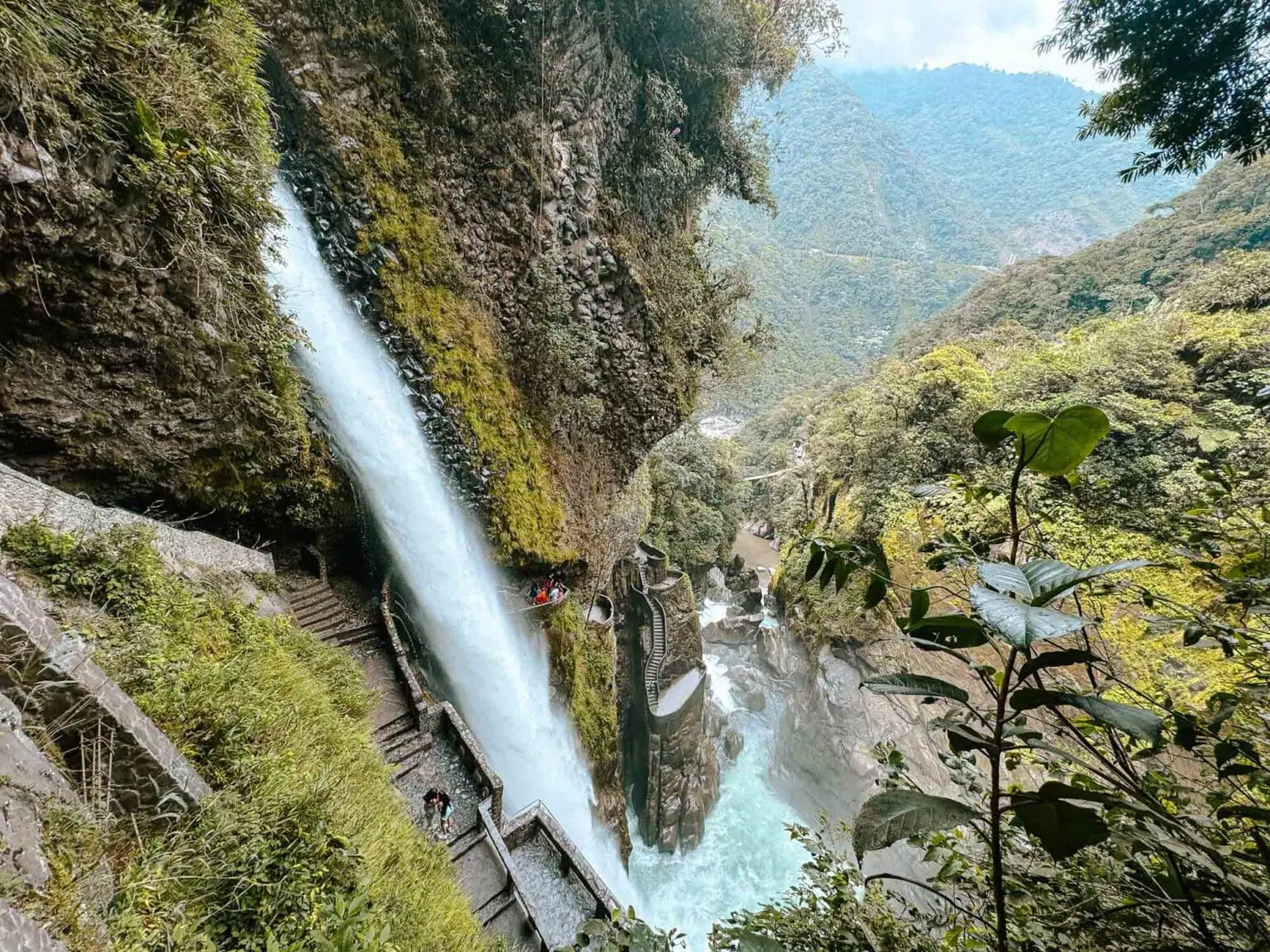
Baños
🧠 Fact: : Known as the "Gateway to the Amazon," Baños offers waterfalls, hot springs, and adventure sports.
💡 Tip: : Don't miss the "Swing at the End of the World" for breathtaking views and a thrilling experience.
Info - Baños, officially Baños de Agua Santa, is a small town famed for its adventure sports and natural hot springs, set amid lush mountains and waterfalls. Known as Ecuador’s adventure capital, it’s the place to go for canyoning, ziplining, white-water rafting, and mountain biking. The town also offers relaxing thermal baths, sacred shrines, and lively markets. Surrounded by volcanic scenery, including the active Tungurahua Volcano, Baños blends adrenaline-pumping thrills with serene natural beauty. Its laid-back vibe and scenic charm make it a must-visit for outdoor lovers and those seeking both relaxation and adventure.
- 📍 Ecuador , Baños
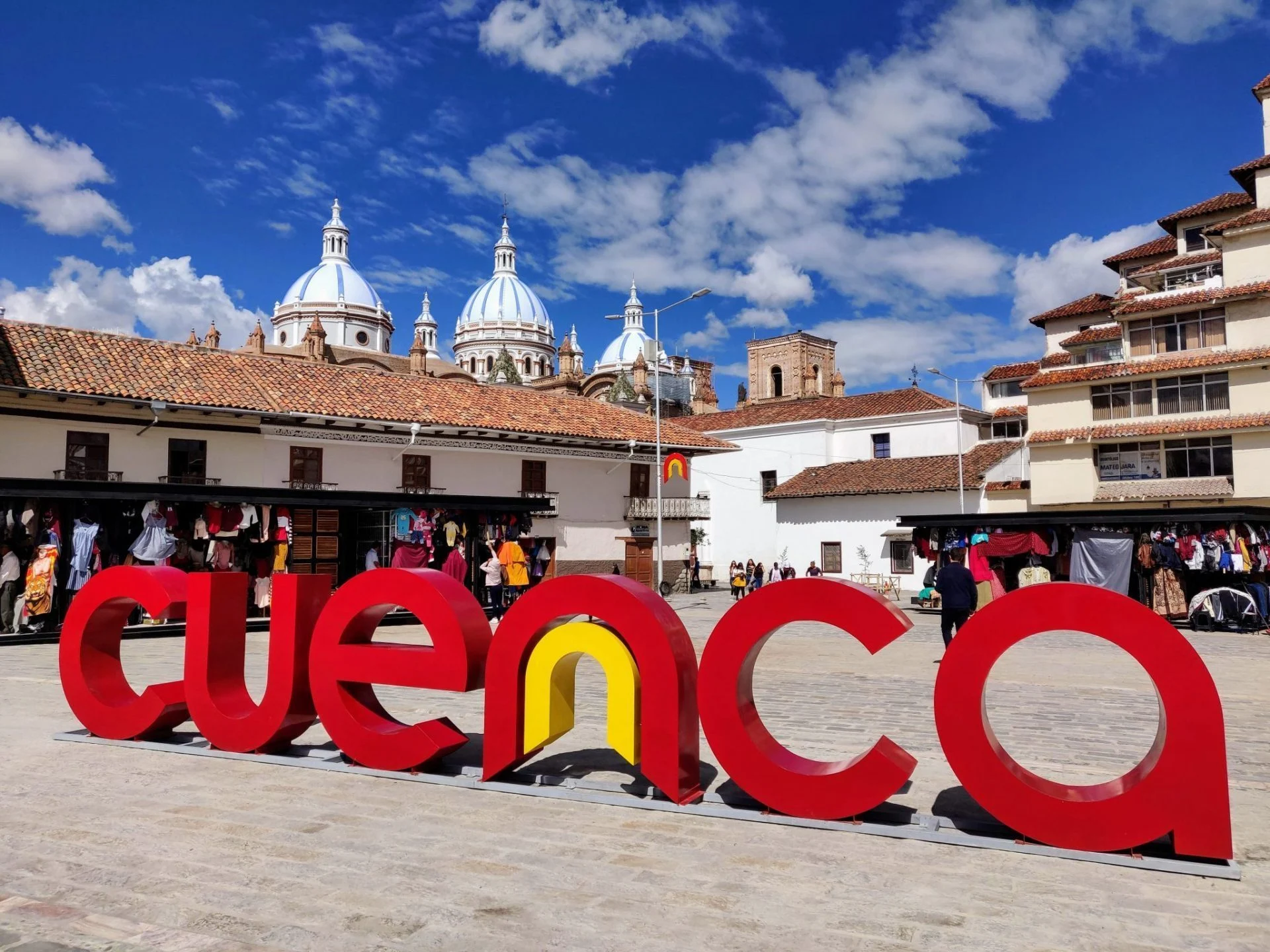
Cuenca
🧠 Fact: A UNESCO World Heritage city known for its well-preserved colonial architecture and vibrant arts scene.
💡 Tip: Stroll along the Tomebamba River and visit local museums to immerse yourself in the city's culture.
Info - Cuenca is one of Ecuador’s most enchanting cities, renowned for its well-preserved colonial charm and laid-back Andean vibe. Recognized as a UNESCO World Heritage Site, Cuenca captivates visitors with its cobbled streets, elegant plazas, and centuries-old churches. The city’s red-tiled roofs and ornate balconies line narrow lanes that open to lively markets and riverside parks. It’s a hub of art, culture, and traditional cuisine, making it a favorite for both travelers and expats. Set at 2,560 meters, Cuenca’s cool, mountain climate complements its rich history, vibrant festivals, and friendly, welcoming atmosphere.
- 📍 Ecuador , Cuenca
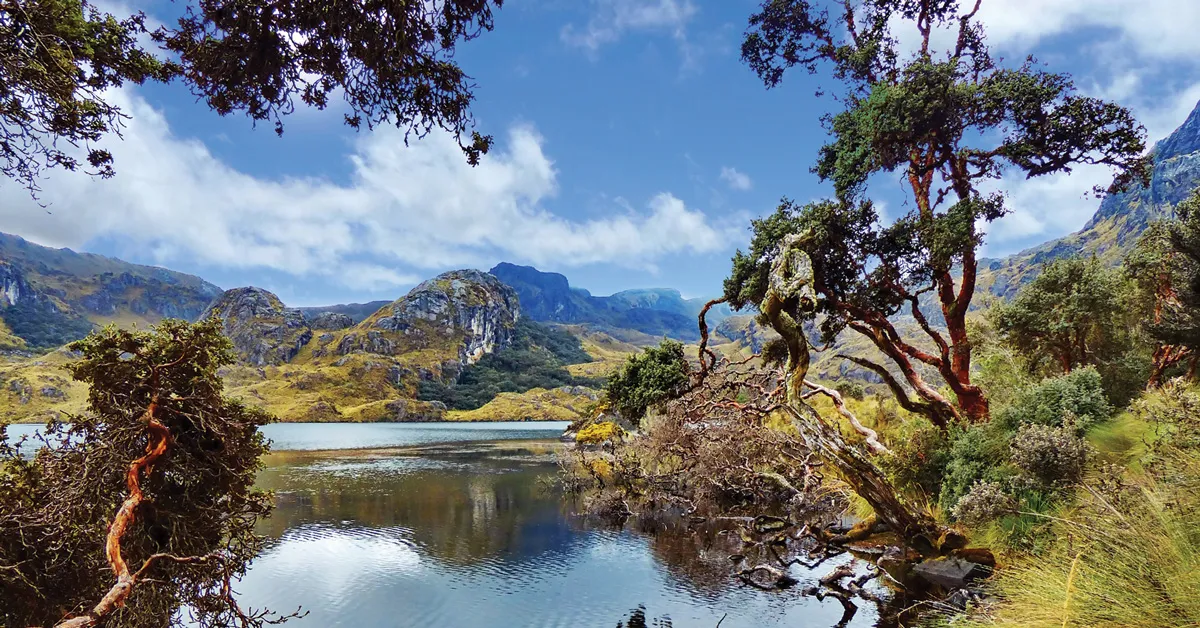
Explore Cajas National Park
🧠 Fact: : Home to over 200 glacial lakes and diverse flora and fauna.
💡 Tip: Dress in layers; the weather can change rapidly at high altitudes.
Info - Cajas National Park is a breathtaking natural reserve located just 30 kilometers west of Cuenca. Known for its rugged, high-altitude landscapes, the park features over 200 glacial lakes, dramatic valleys, misty cloud forests, and rugged Andean peaks. Popular with hikers, birdwatchers, and nature lovers, Cajas offers trails ranging from easy walks to challenging treks, where you might spot llamas, Andean condors, and the elusive spectacled bear. Its stunning scenery and pristine alpine ecosystems make it one of Ecuador’s most striking protected areas — perfect for a day trip into the wilderness from Cuenca.
- 📍 Ecuador , Cuenca
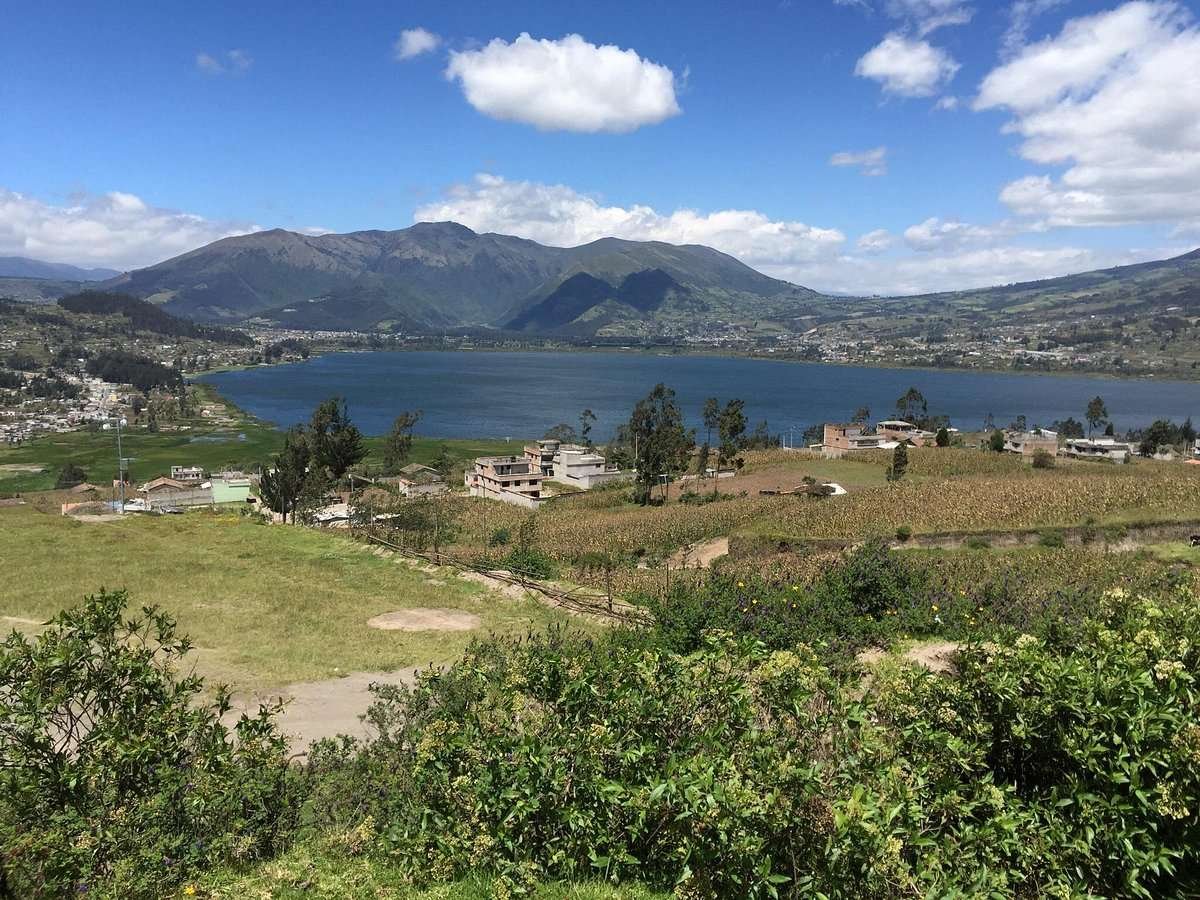
Explore Condor Park
🧠 Fact: : A rescue center for birds of prey, including the majestic Andean condor.
💡 Tip: : Attend the daily flight demonstrations for an up-close experience.
Info - Explore Condor Park
Condor Park, perched on a hill near Otavalo, is a sanctuary dedicated to the rescue and rehabilitation of Andean condors and other birds of prey. Visitors can observe these majestic, endangered birds up close, along with hawks, eagles, and owls. The park’s daily flight demonstrations offer spectacular views of condors soaring against a backdrop of mountains and valleys. Educational exhibits highlight conservation efforts for Ecuador’s native species. With its stunning panoramas and commitment to wildlife protection, Condor Park offers an unforgettable experience for nature lovers and families exploring the Otavalo region.
- 📍 Ecuador , Otavalo
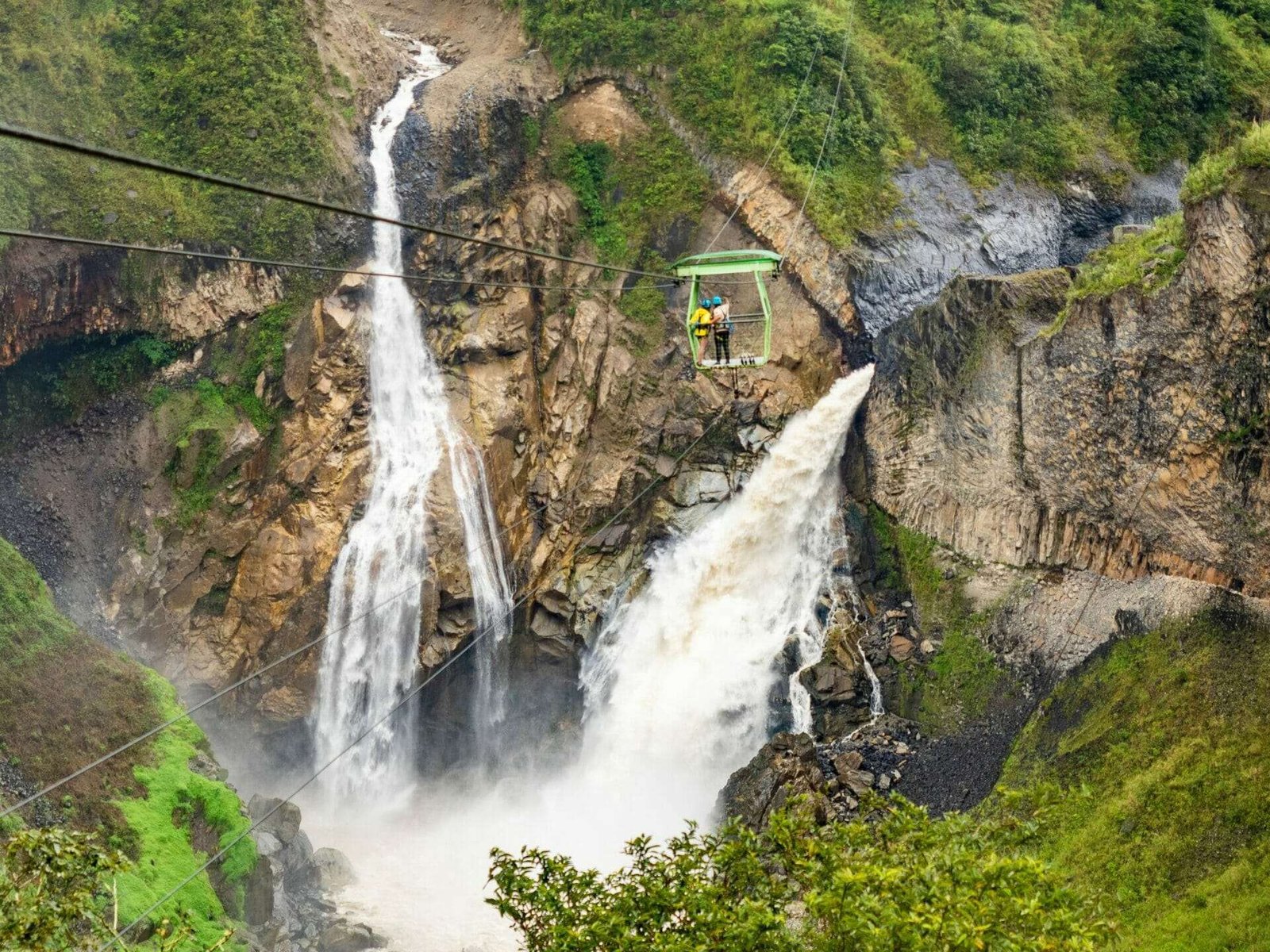
Explore the Route of the Waterfalls
🧠 Fact: : A scenic route featuring numerous waterfalls, including the famous Pailón del Diablo.
💡 Tip: : Rent a bike for a self-guided tour along the route.
Info - The Route of the Waterfalls is a stunning scenic drive or bike ride from Baños through the lush Pastaza River Valley, famed for its dense cloud forests and dramatic cascades. Along the way, travelers encounter over a dozen waterfalls, including the powerful Pailón del Diablo, where suspension bridges and pathways lead to dramatic viewpoints. Visitors can take cable cars across gorges, hike to hidden falls, or zipline over rivers. The route’s mix of rugged landscapes, rainforest greenery, and plunging waterfalls makes it one of Ecuador’s most memorable eco-adventures.
- 📍 Ecuador , Baños
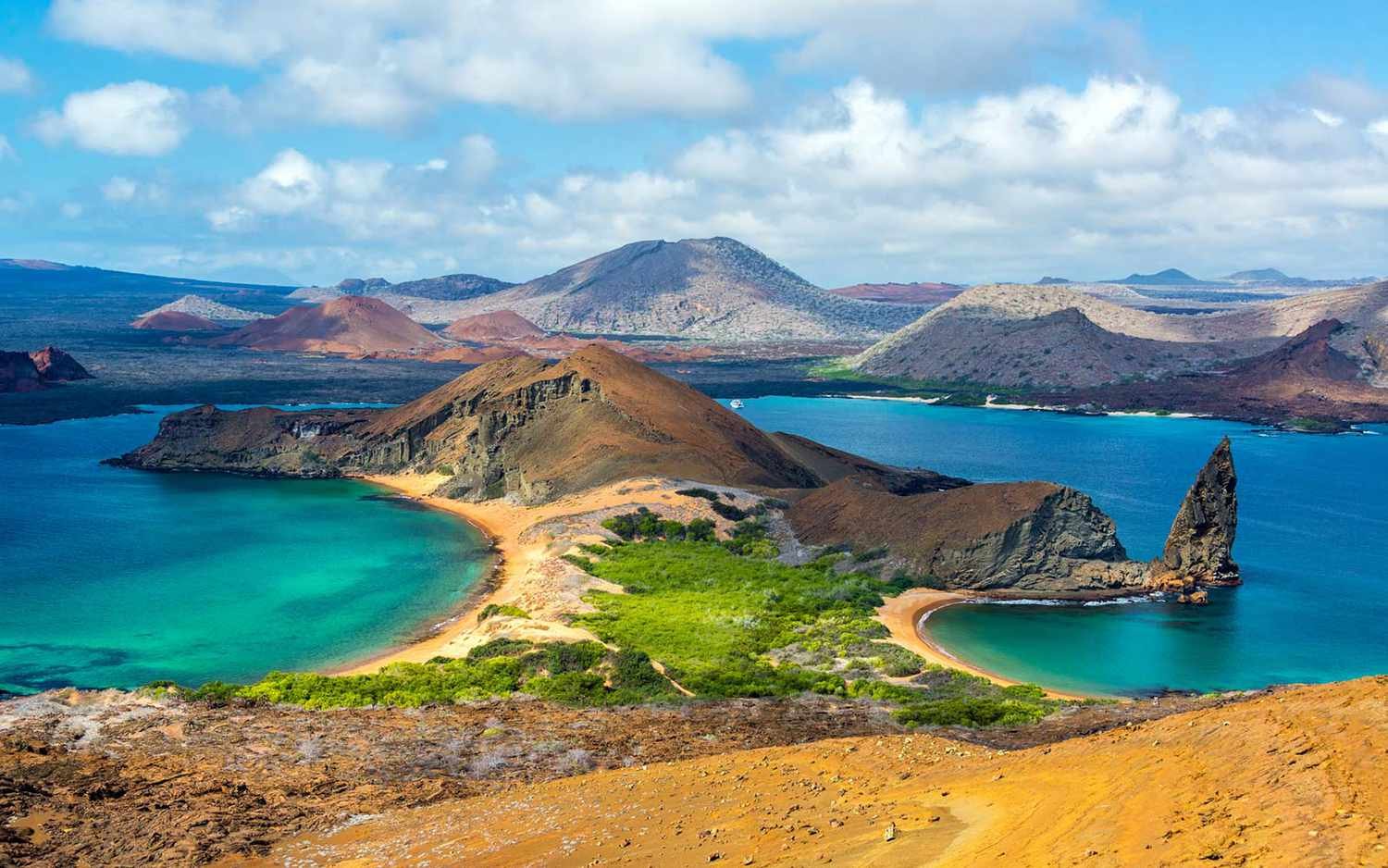
Galápagos Islands
🧠 Fact: : Home to unique wildlife and world-famous dive spots including shipwrecks.
💡 Tip: : For wreck diving, head to Floreana Island to explore the Enderby Wreck, or visit Gardner Bay and North
Info - The Galápagos Islands are one of the planet’s most extraordinary wildlife destinations, a volcanic archipelago renowned for its unique biodiversity and pristine natural beauty. A UNESCO World Heritage Site, the islands inspired Charles Darwin’s theory of evolution. Here, visitors encounter giant tortoises, blue-footed boobies, marine iguanas, and playful sea lions up close. Crystal-clear waters, white-sand beaches, and rugged lava landscapes offer world-class snorkeling, diving, and hiking. Strict conservation rules protect the fragile ecosystems, allowing travelers to explore responsibly. The Galápagos promise a once-in-a-lifetime adventure for nature lovers and outdoor enthusiasts alike.
- 📍 Ecuador , Archipelago
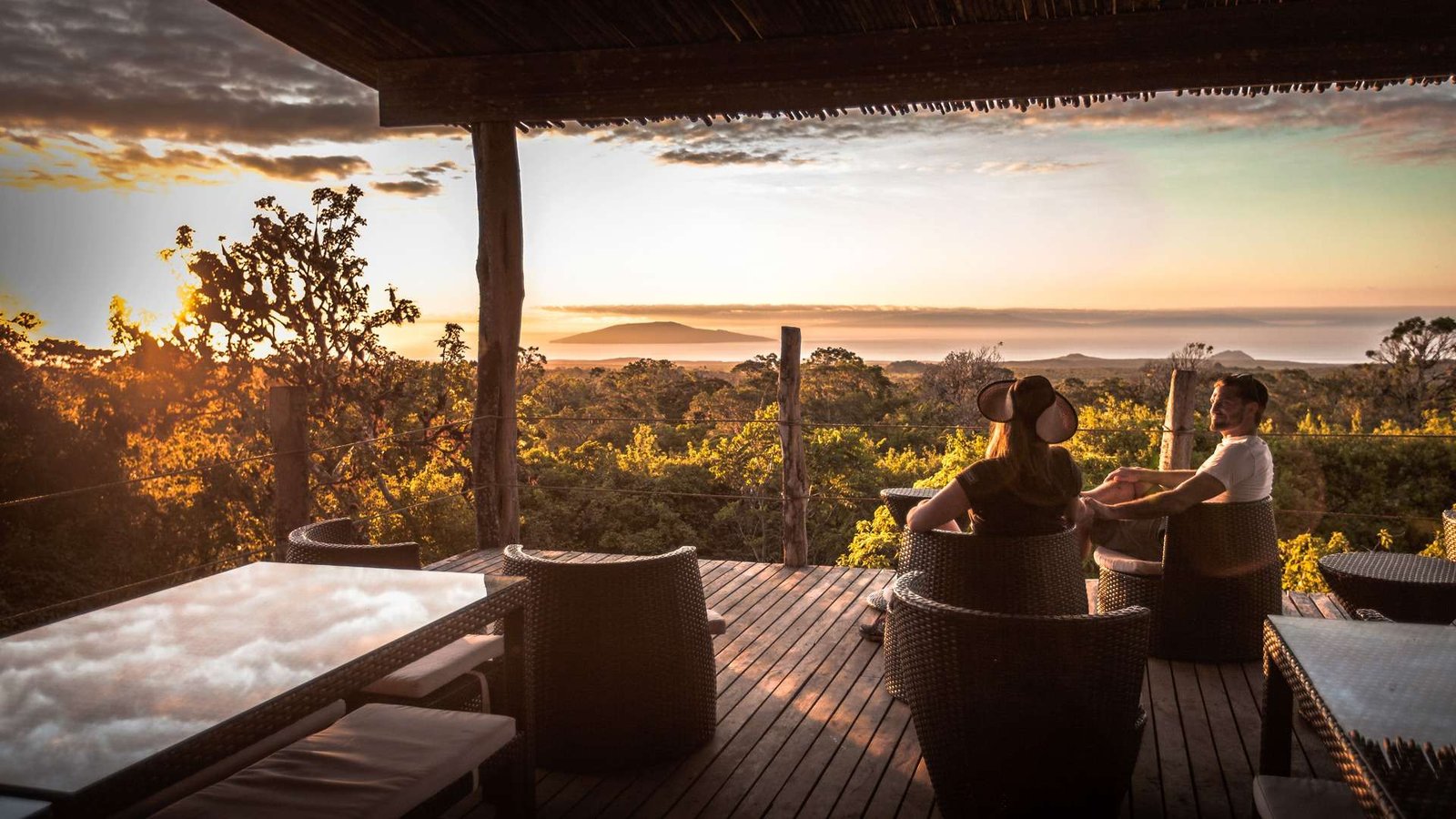
Galápagos Safari Camp
🧠 Fact: : Luxury tented camp experience with sweeping views of the Pacific.
💡 Tip: : Try snorkeling or mountain biking right from the camp
Info - Galápagos Safari Camp offers a luxurious yet eco-conscious base on Santa Cruz Island, blending African-style tented lodges with breathtaking Pacific views. The camp provides immersive wildlife experiences with day tours to nearby islands, snorkeling excursions, and visits to the giant tortoise reserves. Guests relax in elegant tents with en-suite bathrooms and private terraces overlooking lush highland forests. Known for its personalized service, gourmet dining, and commitment to sustainability, the camp creates a comfortable, intimate connection with the islands’ natural wonders. It’s an ideal option for travelers seeking adventure without sacrificing comfort.
- 📍 Ecuador , Santa Cruz Island
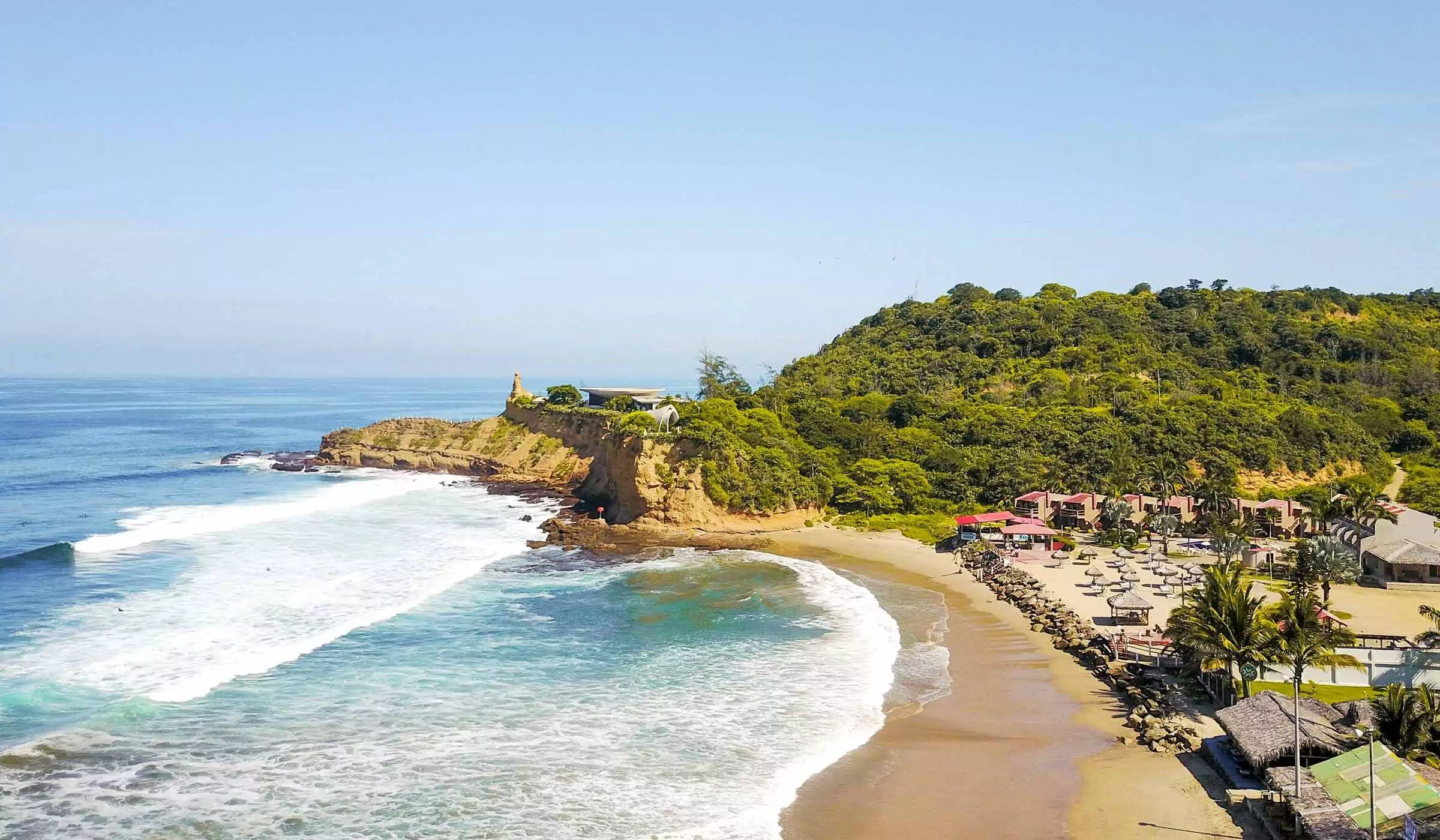
Montañita
🧠 Fact: : Famous surf town with a vibrant beach nightlife.💡 Tip: : Take surf lessons or try paragliding over the cliffs.
Info - Montañita is Ecuador’s most famous beach town, beloved for its laid-back surf culture, lively nightlife, and bohemian vibe. Set along the Pacific coast, the town draws backpackers, surfers, and sunseekers from around the world. Days are spent catching waves, lounging on golden beaches, or exploring nearby natural reserves. As the sun sets, beachfront bars and open-air clubs come alive with music, fire shows, and dancing. Known for its street art, seafood shacks, and relaxed atmosphere, Montañita perfectly captures Ecuador’s coastal spirit, offering both adrenaline-fueled adventures and lazy beach days.
- 📍 Ecuador , Montañita
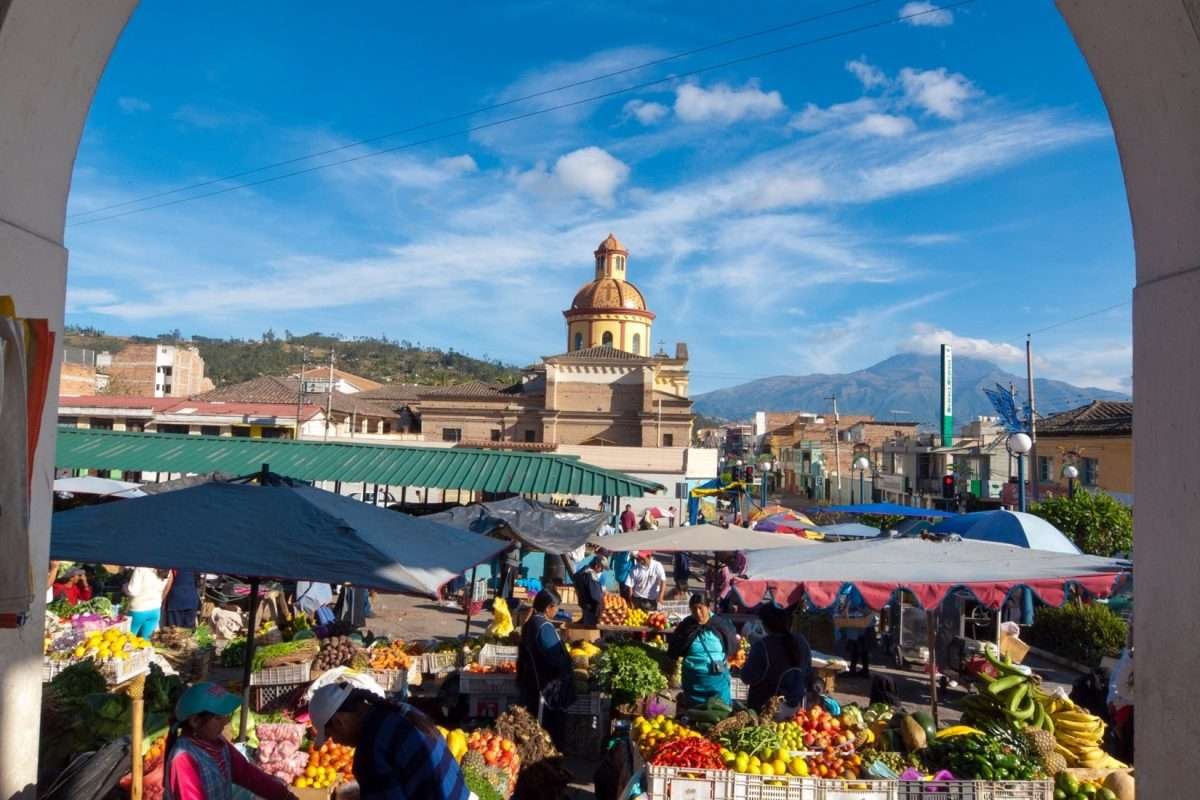
Otavalo
🧠 Fact: : Home to one of South America's most famous indigenous markets, offering textiles, crafts, and local goods.
💡 Tip: Visit on Saturdays for the largest market day, but weekdays offer a more relaxed experience.
Info - Otavalo is a charming highland town in northern Ecuador, famed for its rich indigenous culture and vibrant markets. Surrounded by Andean mountains, including the impressive Imbabura Volcano, Otavalo is a gateway to natural beauty and traditional crafts. The town’s cobbled streets, colonial-era churches, and bustling plazas offer an authentic Andean atmosphere. Visitors come for the local cuisine, friendly atmosphere, and access to surrounding waterfalls, lakes, and ecological reserves. Otavalo’s people, known as Otavaleños, have preserved their distinctive dress, music, and customs, making the town a culturally rich and visually striking stop on any Ecuadorian itinerary.
- 📍 Ecuador , Otavalo
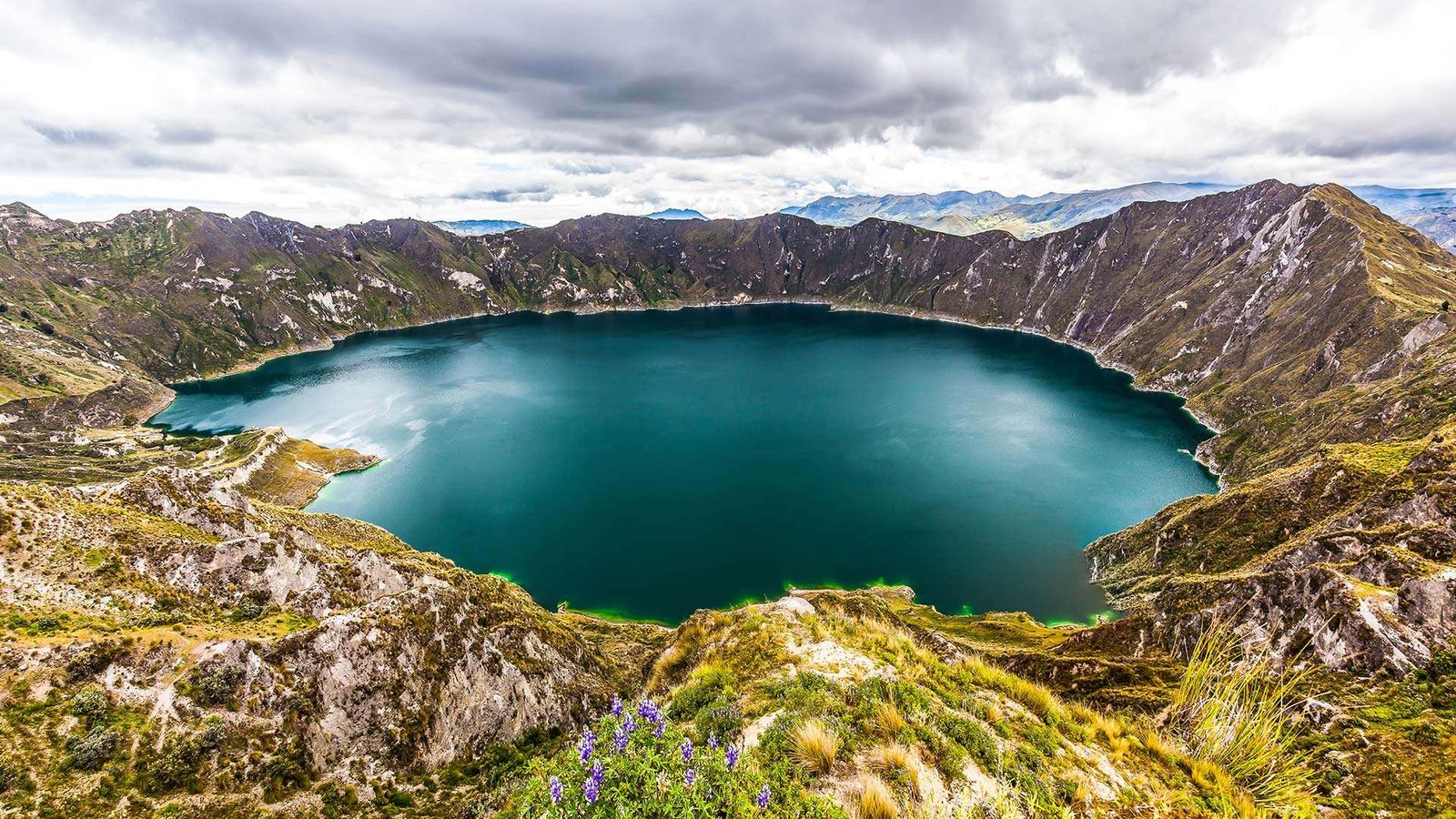
Quilotoa Loop
🧠 Fact: : A popular trekking route featuring the stunning Quilotoa Crater Lake and Andean villages.
💡 Tip: : Plan a multi-day hike to fully experience the loop's natural beauty and cultural encounters
Info - The Quilotoa Loop is a spectacular highland circuit connecting remote Andean villages, deep valleys, and dramatic volcanic scenery, centered around the stunning Quilotoa Crater Lake. The emerald-green, mineral-rich lake fills a collapsed volcanic caldera, making it one of Ecuador’s most photographed sights. Adventurous travelers hike between villages like Chugchilán and Isinliví, passing traditional farmlands, indigenous markets, and cloud forests. The loop offers rustic guesthouses, warm local hospitality, and ever-changing mountain vistas. Whether by foot, bus, or horseback, the Quilotoa Loop delivers unforgettable natural beauty and a deep connection to rural Ecuadorian culture.
- 📍 Ecuador , Latacunga
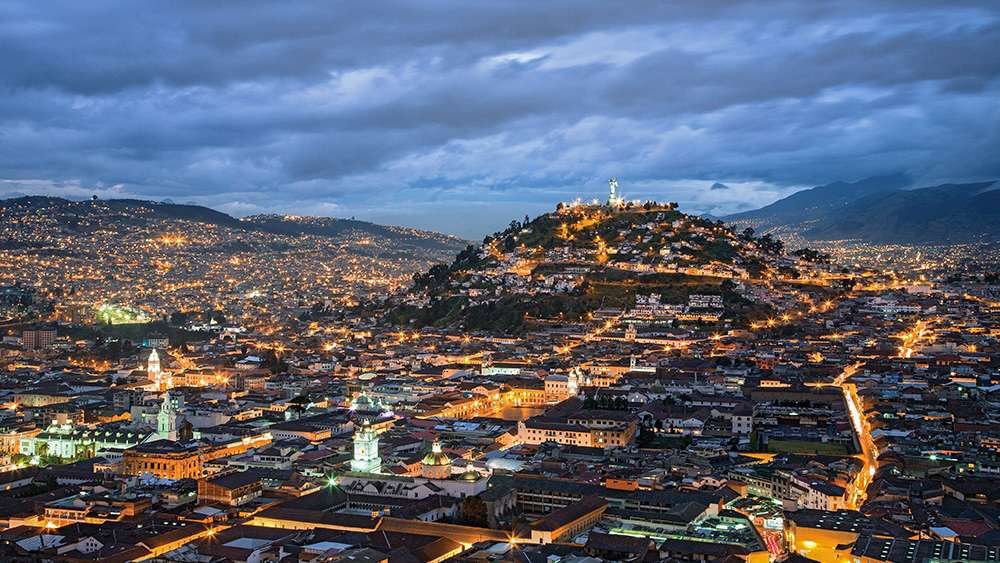
Quito
🧠 Fact: Quito is the second-highest capital city in the world, situated at 2,850 meters above sea level.
💡 Tip: Explore the historic center, a UNESCO World Heritage site, featuring colonial architecture and vibrant plazas
Info - Ecuador’s capital, Quito, is a city of remarkable beauty and cultural depth, nestled high in the Andes at 2,850 meters. It’s famed for its well-preserved colonial architecture, lively plazas, and dramatic mountain backdrop. Quito offers a vibrant mix of old and new — from ancient churches and museums to bustling markets and hip cafés. The city serves as a perfect base for exploring surrounding volcanoes, indigenous villages, and cloud forests. Recognized as a UNESCO World Heritage Site, Quito combines history, Andean tradition, and modern urban life, making it one of South America’s most captivating cities.
- 📍 Ecuador , Quito
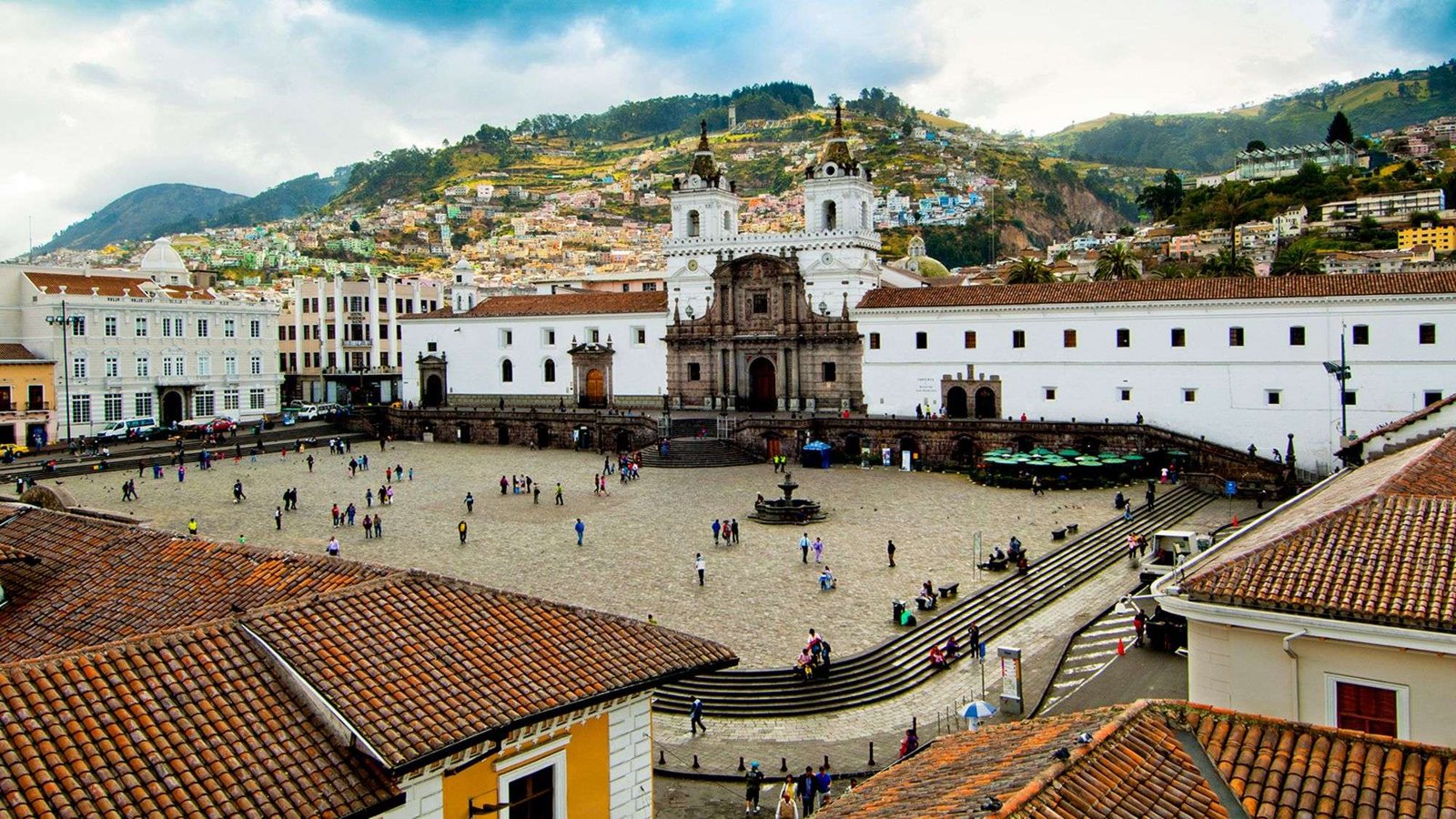
Quito Historic Center
🧠 Fact: Quito's historic center is one of the largest and best-preserved in the Americas.
💡 Tip: Join a guided walking tour to fully appreciate the colonial architecture and history
Info - The Quito Historic Center is one of the best-preserved colonial quarters in Latin America and a UNESCO World Heritage Site. Its cobbled streets are lined with 16th and 17th-century churches, convents, and mansions. Highlights include La Compañía de Jesús, famous for its lavish gold-leaf interior, and the grand Plaza Grande, bordered by the Presidential Palace. The San Francisco Monastery and Basilica del Voto Nacional are other must-sees. Bustling markets and street performers animate the area, while rooftop cafés offer sweeping city views. This atmospheric district feels like a living museum of Ecuador’s colonial past.
- 📍 Ecuador , Quito
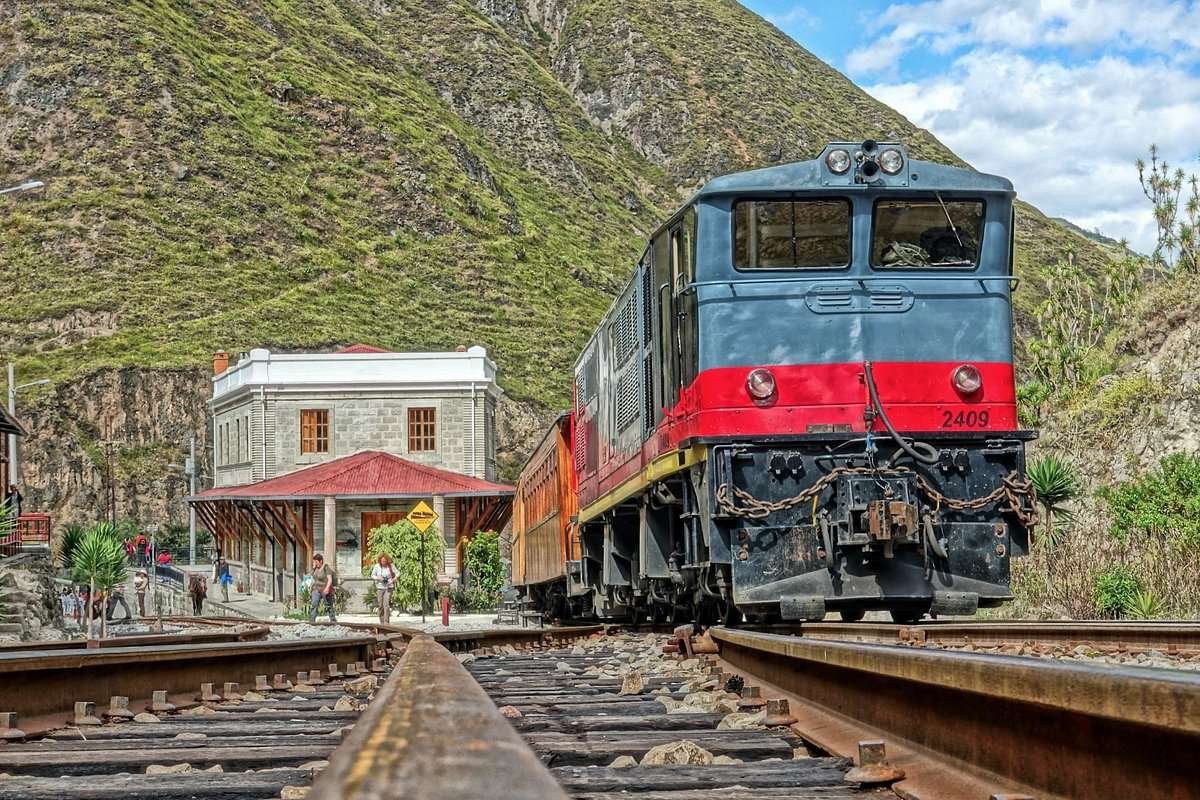
Ride the Devil’s Nose Train
🧠 Fact: An engineering marvel with a zigzag track descending steep slopes.
💡 Tip: Book tickets in advance, as this popular attraction can sell out.
Info - The Devil’s Nose Train, or Nariz del Diablo, is one of Ecuador’s most iconic railway experiences, known for its dramatic switchbacks along a sheer cliff face. Starting from Alausí near Riobamba, the route descends through tight mountain gorges and zigzags down steep slopes. The engineering marvel was designed to conquer the Andes’ most challenging terrain. Today, it’s a heritage tourist ride offering panoramic views of river valleys, rugged canyons, and Andean villages. The journey includes cultural performances and stops at local markets, making it a thrilling mix of history, scenery, and tradition.
- 📍 Ecuador , Riobamba
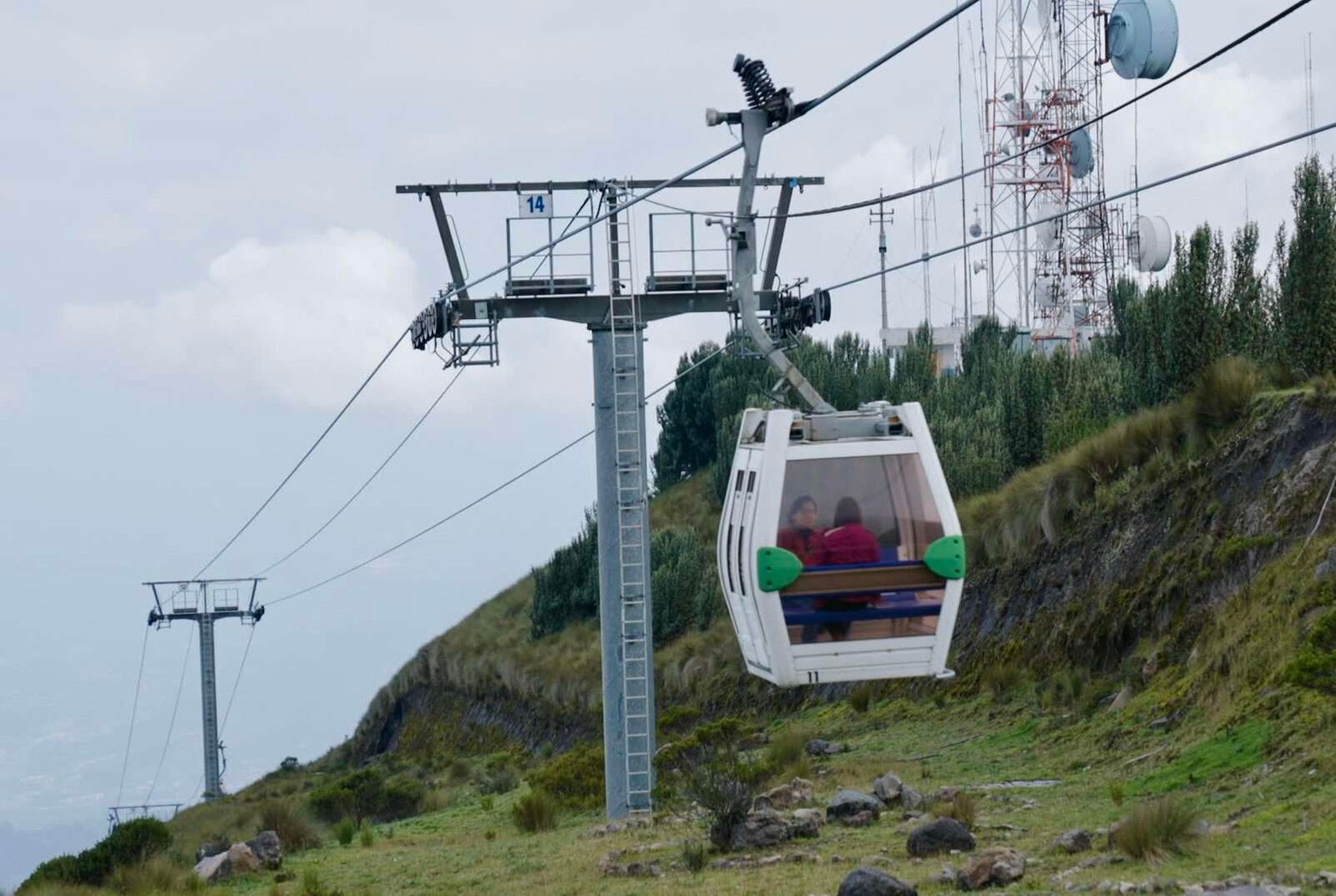
Ride the TelefériQo
🧠 Fact: : One of the highest aerial lifts in the world, reaching over 4,000 meters.
💡 Tip: : Go early in the morning for clearer views and to avoid afternoon clouds.
Info - The TelefériQo is one of Quito’s top attractions, whisking visitors up the slopes of the Pichincha Volcano to Cruz Loma at over 4,000 meters. This scenic gondola ride offers breathtaking panoramic views of Quito’s sprawling cityscape, surrounding mountains, and, on clear days, distant snow-capped peaks like Cotopaxi. At the top, hiking trails, a small amusement park, and cafés await. Adventure seekers often trek further up to the Rucu Pichincha summit. The TelefériQo provides not just a ride but an experience — combining natural beauty, outdoor adventure, and one of the highest aerial lifts in the world.
- 📍 Ecuador , Quito
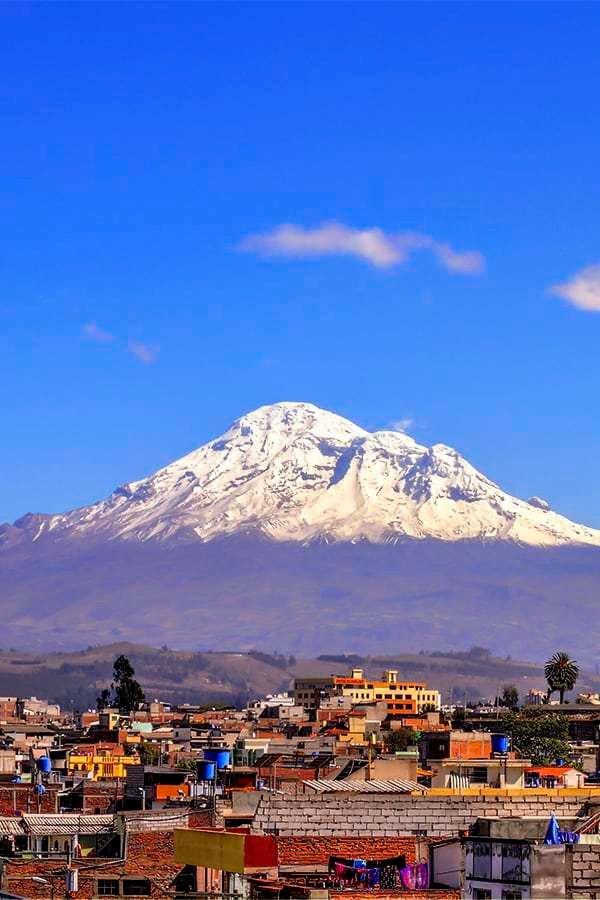
Riobamba
🧠 Fact: : Situated near Chimborazo, Ecuador's highest volcano, offering stunning mountain landscapes.
💡 Tip: Take a train ride through the "Devil's Nose" for a unique and scenic journey.
Info - Riobamba, nicknamed the “Sultana of the Andes,” is a historic city set against a backdrop of snow-capped volcanoes in Ecuador’s central highlands. Known as the starting point for mountain adventures, including Chimborazo Volcano, it charms visitors with its colonial churches, bustling markets, and Andean traditions. The city’s Plaza Sucre and La Concepción Church showcase its colonial past, while nearby villages specialize in crafts and festivals. Riobamba is also famous for its railway history and serves as a laid-back, culturally rich base for highland explorations and mountaineering adventures.
- 📍 Ecuador , Riobamba
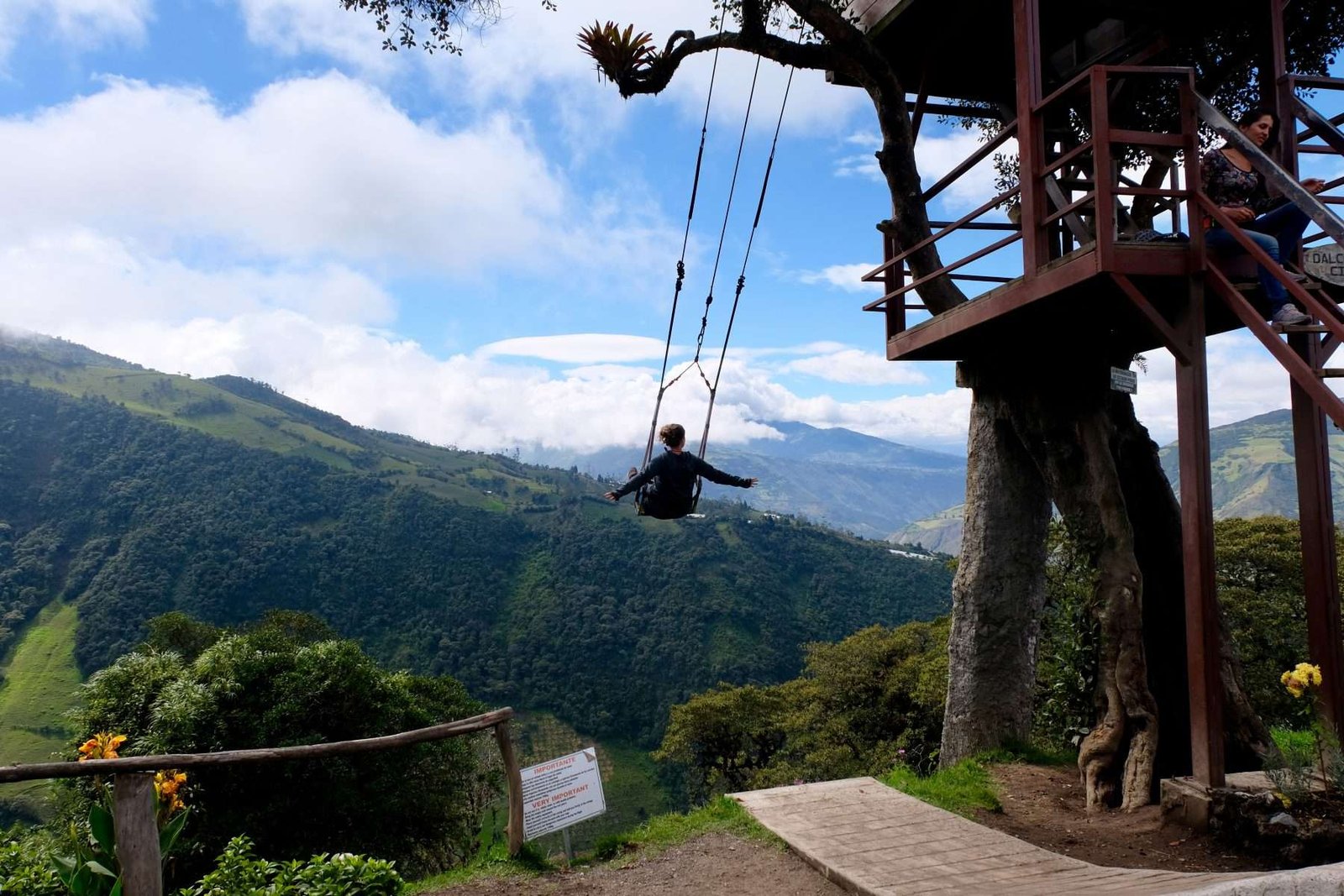
Swing at the End of the World
🧠 Fact: : A swing set on the edge of a cliff offering thrilling views of Tungurahua volcano.
💡 Tip: : Go early to avoid crowds and capture the best photos.
Info - Perched at La Casa del Árbol near Baños, the Swing at the End of the World is an iconic Ecuadorian attraction. Adventurers strap into a simple swing set on a mountaintop, soaring over a steep drop with jaw-dropping views of Tungurahua Volcano and the lush valley below. Originally built as a volcano monitoring station, it’s now one of the country’s most photographed spots. The swing offers a thrilling yet simple ride that delivers big on scenery and adrenaline. It’s a bucket-list experience for travelers seeking both Instagram-worthy moments and dramatic mountain landscapes.
- 📍 Ecuador , Baños

Tour the Historic Center
🧠 Fact: A UNESCO World Heritage site known for its colonial architecture and cobblestone streets.
💡 Tip: Visit the New Cathedral and climb to the dome for panoramic city views.
Info - Cuenca’s Historic Center is a treasure trove of colonial architecture and cultural landmarks. Wander through Plaza Calderón, where the grand New Cathedral, with its distinctive blue domes, dominates the skyline. Nearby, the 16th-century Old Cathedral houses a fascinating religious art museum. Charming streets lead to bustling markets, artisanal workshops, and flower-filled plazas. Museums, galleries, and cozy cafés fill restored colonial mansions. The district’s narrow lanes and heritage buildings offer a glimpse into Ecuador’s colonial past while remaining alive with music, street art, and everyday city life. It’s an unmissable, atmospheric heart of the city.
- 📍 Ecuador , Cuenca
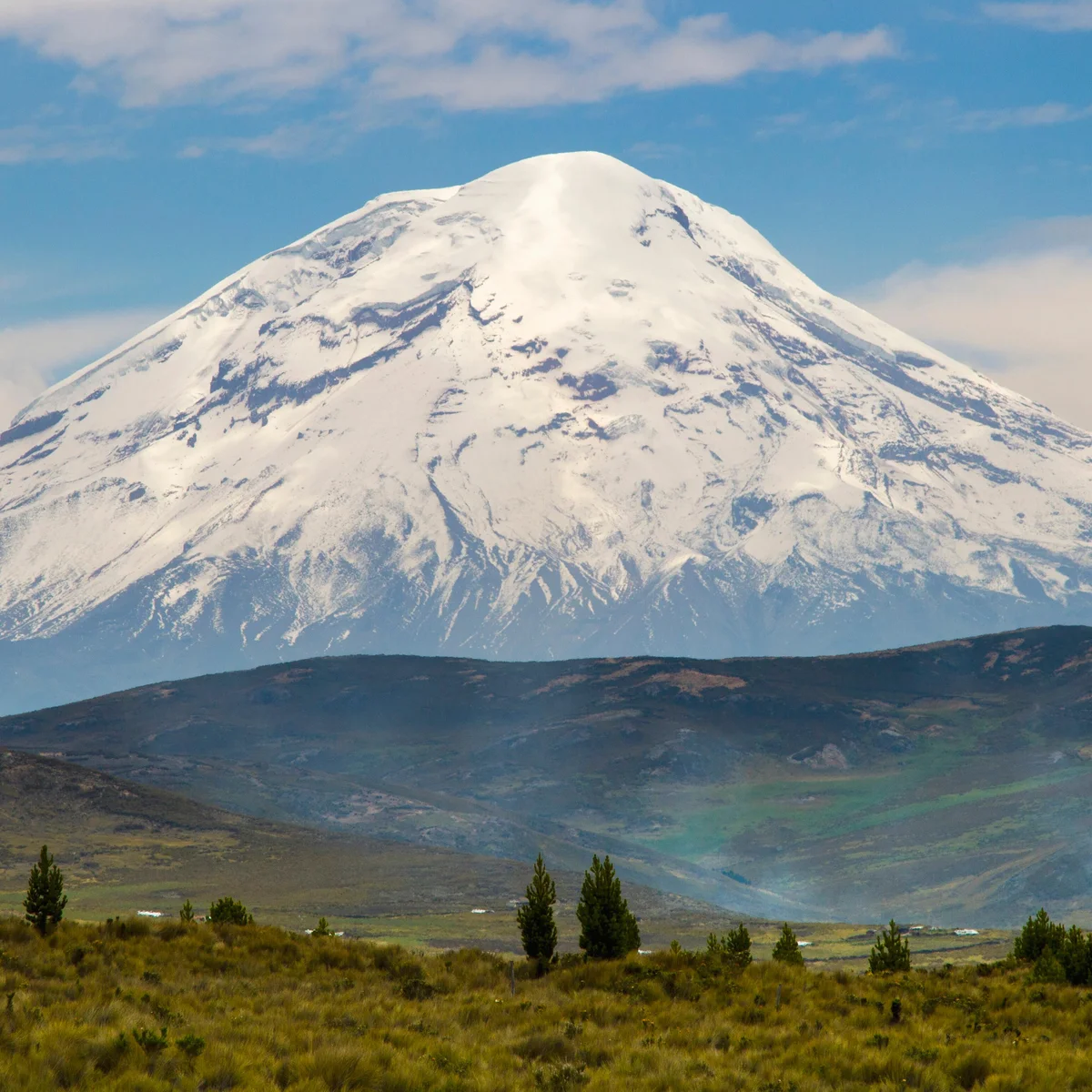
Visit Chimborazo Volcano
🧠 Fact: The closest point on Earth to the sun due to the equatorial bulge.
💡 Tip: Acclimate to the altitude before attempting hikes.
Info - Chimborazo, Ecuador’s highest mountain at 6,263 meters, is a towering inactive volcano often snow-capped and visible from Riobamba. Due to the Earth’s equatorial bulge, its summit is the closest point on the planet to outer space. Adventurous travelers trek to its refuges, starting from the Carrel Refuge at 4,850 meters. Even without summiting, the reserve offers wildlife spotting, including vicuñas, and sweeping Andean vistas. Chimborazo’s grandeur makes it a favorite for mountaineers and nature lovers alike, offering a glimpse into Ecuador’s high-altitude ecosystems and ancient volcanic landscapes.
- 📍 Ecuador , Riobamba
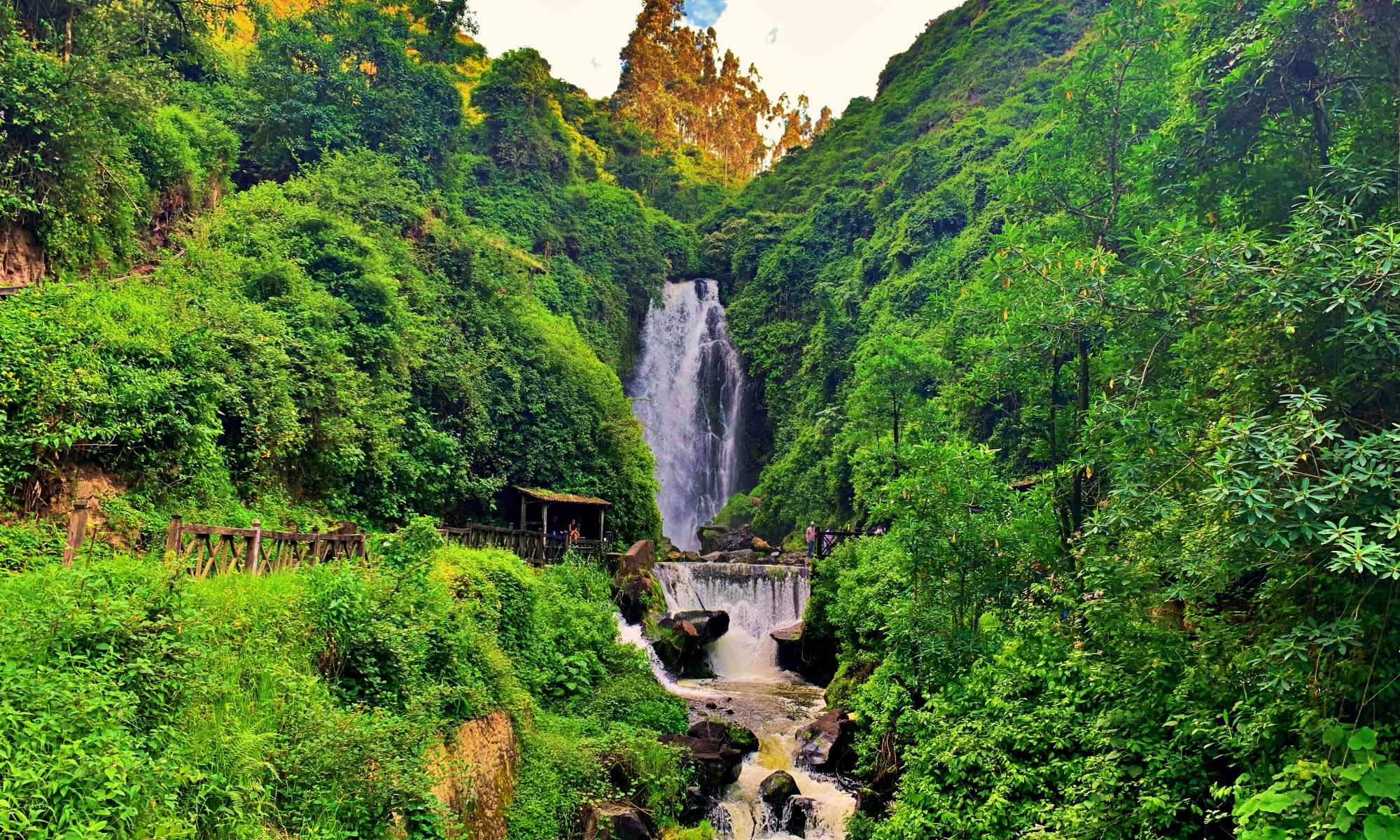
Visit Peguche Waterfall
🧠 Fact: : A sacred site for the local Kichwa people, used in traditional rituals.
💡 Tip: : Take the short hike from the town center to enjoy the natural beauty.
Info - Just a short drive or hike from Otavalo, Peguche Waterfall is a picturesque 18-meter cascade tucked within a protected forest. Considered a sacred site by the local Kichwa people, it plays a central role in indigenous solstice celebrations. Visitors can stroll scenic forest trails, cross hanging bridges, and cool off by the falls’ misty spray. Nearby, craft shops and traditional music performances enhance the experience. The falls’ serene setting makes it a popular destination for both tourists and locals seeking nature, culture, and tranquility in the Andean highlands.
- 📍 Ecuador , Otavalo
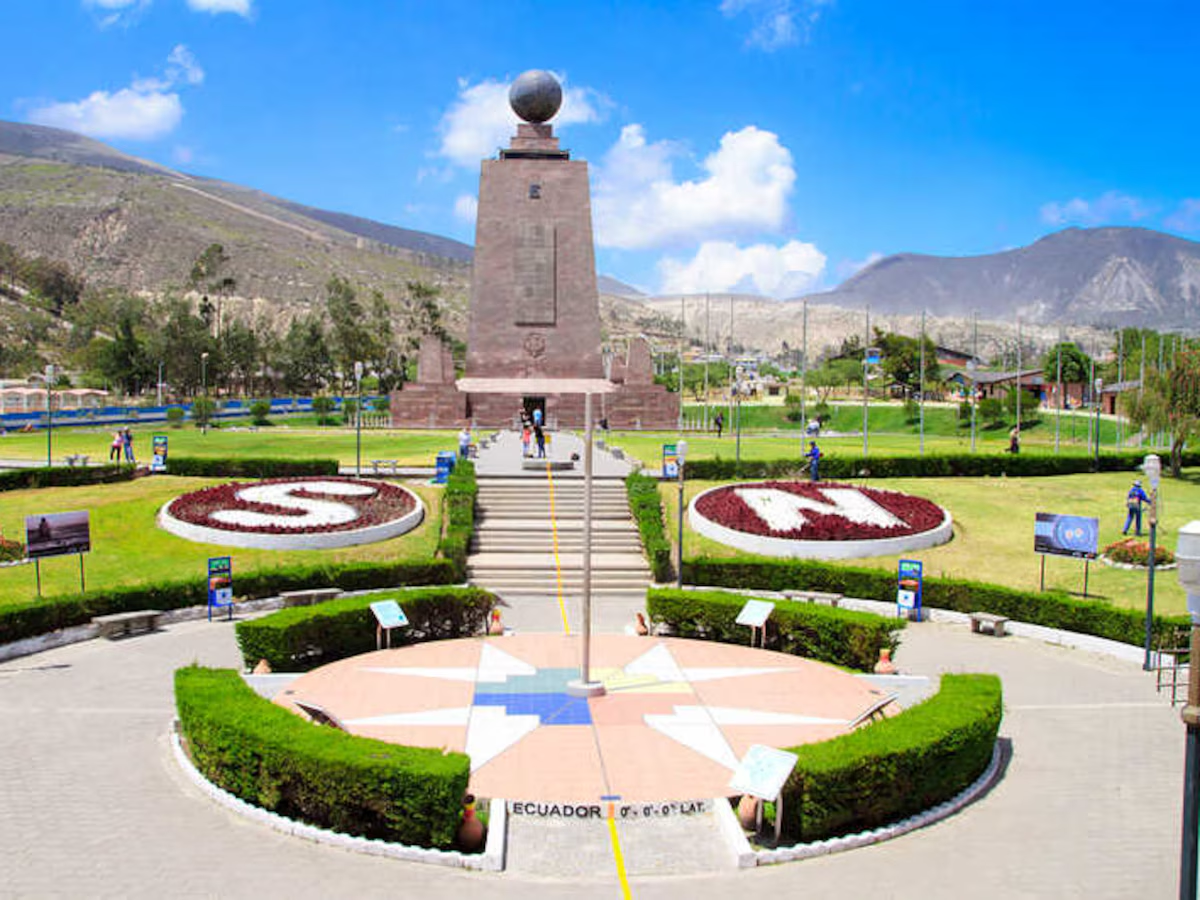
Visit the Middle of the World (Mitad del Mundo)
🧠 Fact: This monument marks the equator line where you can stand with one foot in each hemisphere.
💡 Tip: Explore the interactive museum nearby for engaging science exhibits.
Info - Just north of Quito lies the famous Mitad del Mundo, where you can stand with one foot in each hemisphere. This popular attraction marks the location of the equatorial line, commemorated by a 30-meter monument. While GPS later revealed the true equator lies a few hundred meters away, visitors still flock here for photos, museums, and cultural performances. The nearby Intiñan Museum offers hands-on experiments demonstrating equatorial physics and indigenous traditions. It’s a fun, educational outing and one of Ecuador’s most iconic landmarks, ideal for travelers looking to check off a truly global bucket-list spot.
- 📍 Ecuador , Quito
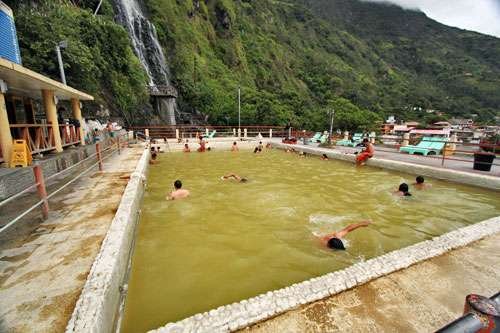
Visit the Thermal Baths
🧠 Fact: : Natural hot springs heated by volcanic activity, believed to have healing properties.
💡 Tip: : Visit in the evening for a relaxing soak under the stars.
Info - Baños is famous for its natural thermal baths, heated by the nearby Tungurahua Volcano. The most popular, Termas de la Virgen, lies at the base of a waterfall, offering a mix of steamy, mineral-rich pools in varying temperatures. Locals and visitors alike soak in the rejuvenating waters, believed to have healing properties for body aches and stress relief. Morning visits are especially atmospheric, with mist rising off the warm pools against the cool mountain air. It’s a perfect way to relax after a day of outdoor adventures in the surrounding Andean wilderness.
- 📍 Ecuador , Baños
